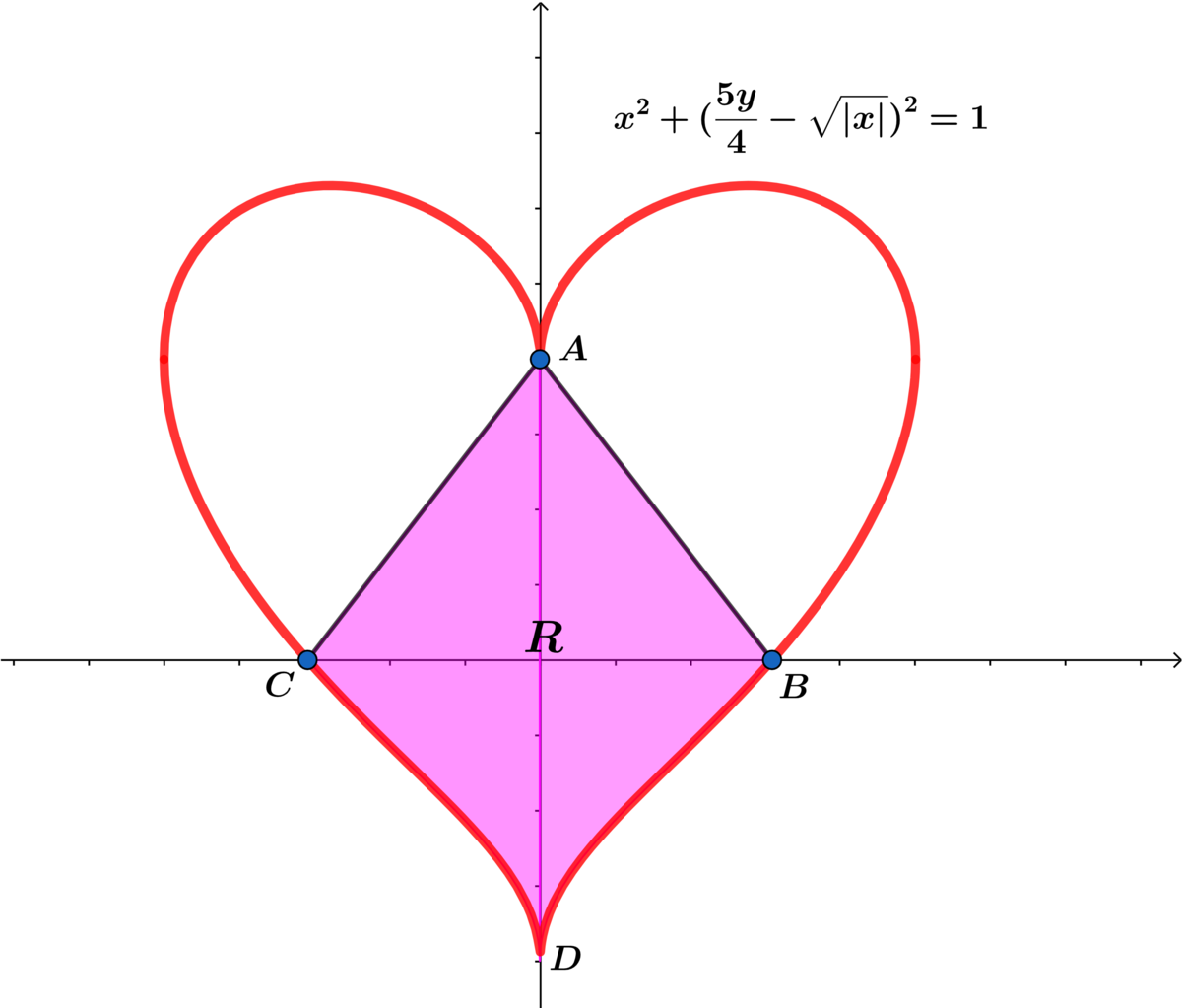Valentine Day Problem 2.

In the heart curve above, goes from the positive intercept to the positive intercept and goes from the positive intercept to the negative intercept and points encloses the region .
If the area of the region of the heart curve can be expressed as , where , and are coprime positive integers and is the golden ratio, find .
Note: I initially posted this problem a week prior to Valentines day, so I'm reposting now.
The answer is 10.
This section requires Javascript.
You are seeing this because something didn't load right. We suggest you, (a) try
refreshing the page, (b) enabling javascript if it is disabled on your browser and,
finally, (c)
loading the
non-javascript version of this page
. We're sorry about the hassle.
For the x intercept of y 1 = 5 4 ( x − 1 − x 2 ) we obtain:
x 2 + x − 1 = 0 ⟹ x = 2 − 1 ± 5 , since x = − 2 1 + 5 = − ϕ results in a complex valued square root ⟹ x = 2 5 − 1 is the x intercept of y 1 = 5 4 ( x − 1 − x 2 ) .
The equation of the line passing thru A : ( 0 , 5 4 ) and B : ( 2 5 − 1 , 0 ) is:
y = 5 4 ( 5 − 1 − 2 x + 1 ) ⟹
A R 1 = 5 4 ∫ 0 2 5 − 1 ( 1 − 5 − 1 2 x + 1 − x 2 − x ) d x
For ∫ 1 − x 2 d x
Let x = sin ( θ ) ⟹ d x = cos ( θ ) ⟹ ∫ 1 − x 2 d x = ∫ cos 2 ( θ ) d θ = 2 1 ( θ + sin ( θ ) cos ( θ ) ) .
Let β = 2 5 − 1
⟹ ∫ 0 β 1 − x 2 d x = 2 1 arcsin ( β ) + 2 1 β 2 3 ⟹ A R 1 = 5 4 ( 2 1 arcsin ( β ) + 2 1 β 2 3 + ( − 3 2 x 2 3 + x − 5 − 1 x 2 ) ∣ 0 β = 5 2 ( arcsin ( β ) − 3 1 β 2 3 + β )
β = 2 5 − 1 = 2 1 + 5 − 1 = ϕ − 1 ⟹ A R 1 = 5 2 ( arcsin ( ϕ − 1 ) − 3 1 ( ϕ − 1 ) 2 3 + ϕ − 1 ) ⟹ A R = 2 A R 1 = 5 4 ( arcsin ( ϕ − 1 ) − 3 1 ( ϕ − 1 ) 3 / 2 + ϕ − 1 ) = b a 2 ( arcsin ( ϕ − 1 ) − c 1 ( ϕ − 1 ) c / a + ( ϕ − 1 ) ) ⟹ a + b + c = 1 0 .